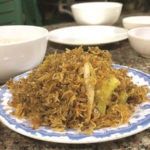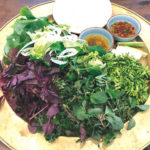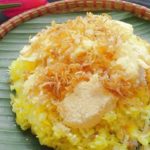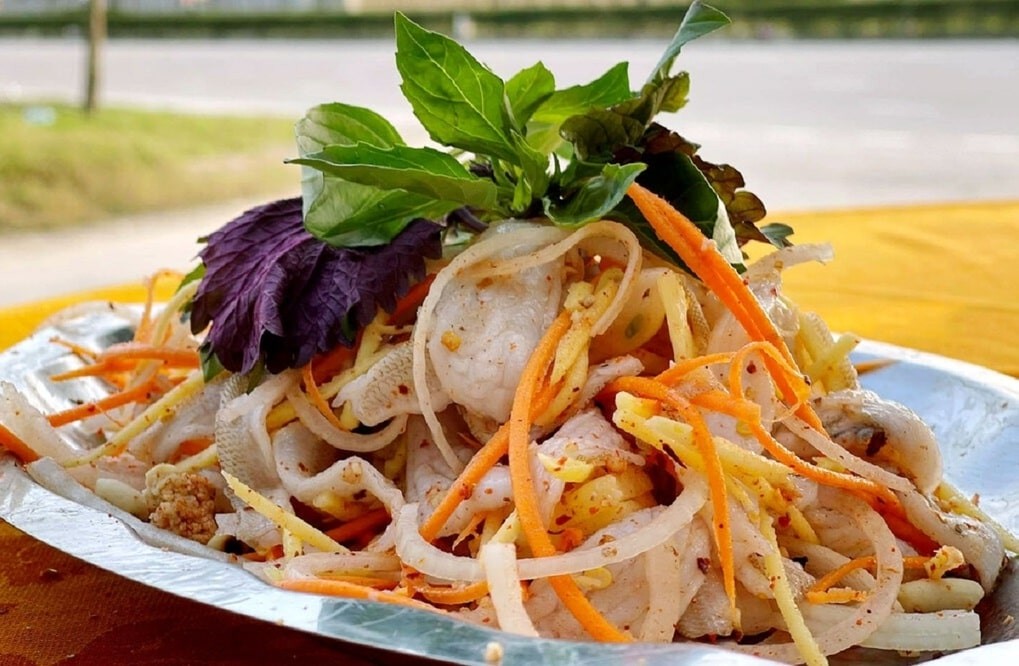 |
| Photo: Tuy Phong |
‘Goi ca’ (raw fish salad) is a local special delicious dishes that can’t be missed when you are in Da Nang.
The dish is made from many kinds of fresh fish, including small herrings, sardines and anchovies.
Fish fillets are carefully mixed with seasonings including spicy pepper, minced garlic, ginger, lemon, and vinegar. They are then covered with roasted corn powder to make it medium rare. This special cooking method helps to eliminate the unpleasant smell of raw fish.
Raw vegetables are indispensable ingredients, making this nutritious dish even more delicious. These include mango leaves, polyscias fruticosa, and other colorful edible vegetables picked from local forests.
This dish is served with thinly sliced carambola, unripe bananas, chillies, soft rice papers, and a tasty dipping sauce.
The taste of the dish heavily relies on dipping sauce which feature the wonderful combination of condensed Nam O fish sauce, a little of boiled water, sugar, chillies and garlic.
By trying this special dish in the Nam O fishing village itself, visitors not only enjoy the essence of traditional cuisine, but also experience the local hospitality and culture.
A long history
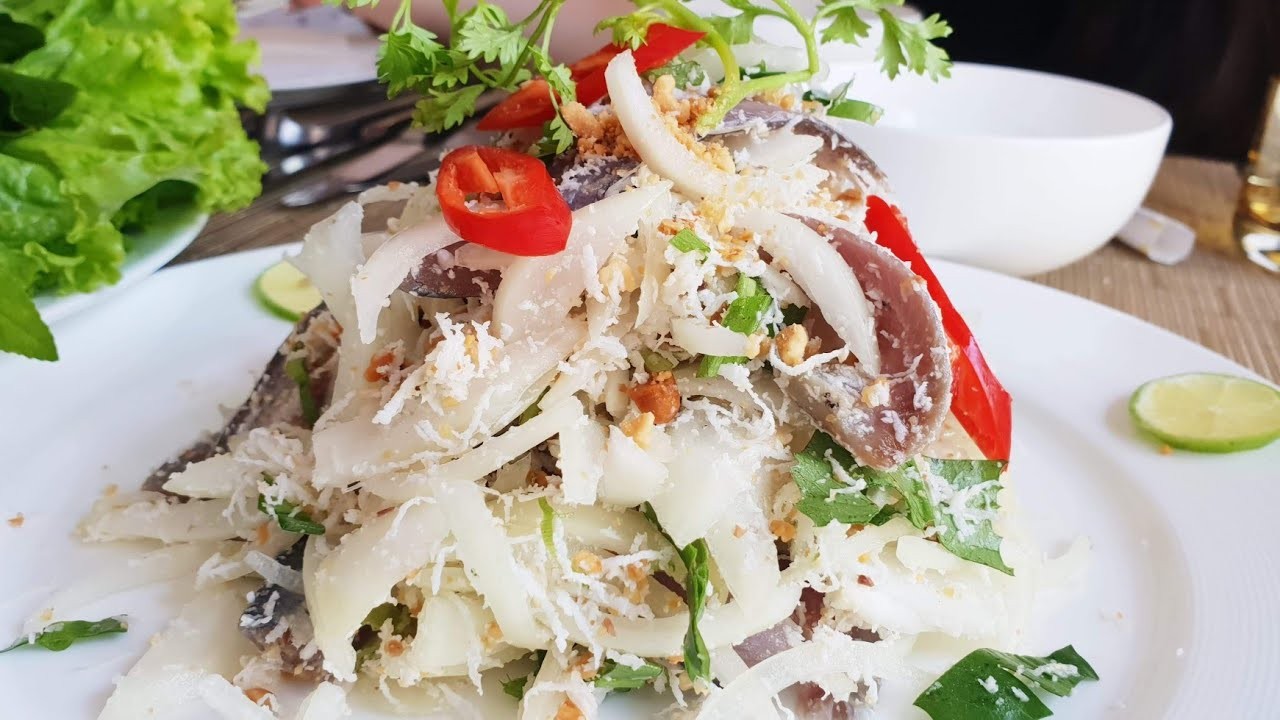 |
| Photo: cuisineofvietnam |
One record says during the Hung King dynasty, a general named Quý Minh treated his friends with gỏi cá, more than 2200 years ago.
In fact, all these historical figures are immortaized as saints, and nowadays, local people still worship and offer the dish in some rituals.
The etymology of the word gỏi means “raw fish salad.” However, in southern Vietnamese dialect, the word gỏi means any kind of Vietnamese salad.
So, the word “gỏi cá” was created to distinguish common salad from raw fish salad.
In North Vietnam, common salad is called “nộm.” However, nowadays, the word gỏi is widely used throughout Vietnam for all types of Vietnamese salad, and raw fish salad is one of them.
Originally, the fish species limited to some freshwater fish, but later the fish choice is quite diverse both with freshwater and saltwater fish: larges-cale silver carp (Bắc Giang, Thái Nguyên, Hải Dương provinces); crucian carp (Khánh Hòa, Phú Yên, Bình Định provinces); small eel fry (Ninh Bình, Thanh Hóa, Thái Bình provinces); white sardine (central-southern coastal provinces), whiting (Bình Thuận, Bà Rịa – Vũng Tàu provinces), needlefish (Phú Yên province); and sardines( Phú Quốc island) Other fish include anchovy, yellowcheek, red snapper and spurdog.
 |
| Photo: Pinterest |
Cooking method and flavour pairings
The first step is to fillet the fresh fish, then slice it into pieces. The next step is to remove the fish smell, then cure the fish flesh with thính powder (roasted cereals), and herbs. However, ingredients used vary across different regions to suit different taste buds.
To cure the fish flesh, either lime, liquor, or galangal can be used. In some Vietnamese restaurants, raw fish fillets are served and can be cured with mustard or wasabi similar as with Japanese sashimi.
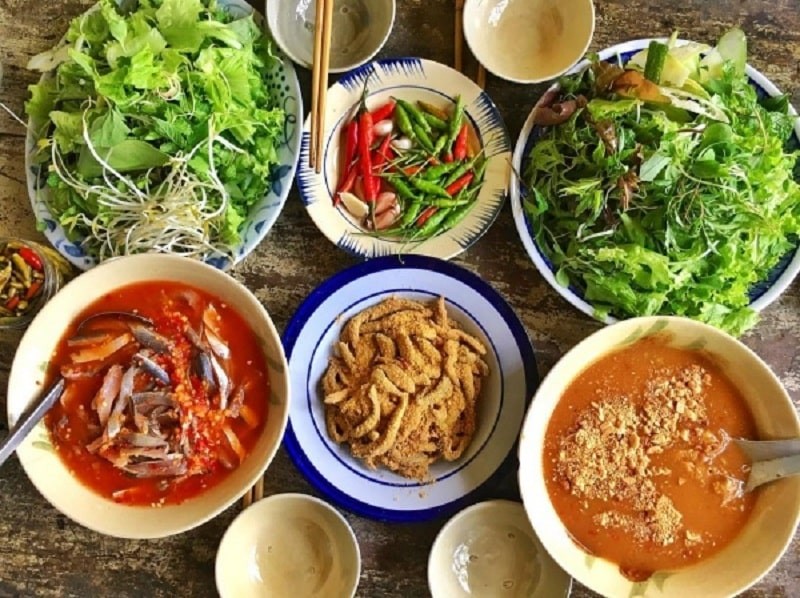 |
| Photo: Inhat |
The salad greens and herbs have a variety of choices: đinh lăng leaves (Polyscias fruticosa), fig leaves and/or fruits, mango-pine leaves (Barringtonia acutangula), sawtooth coriander, guava leaves, purple perilla, coriander, green banana, banana blossoms, cinnamon basil, star fruits, onions, green mango or baywatch leaves.
The dipping sauce form the characteristics of the raw fish salad dish. The base ingredients are fish sauce or soy sauce, mixed with crushed roasted peanuts, chilli, garlic, sugar and lime juice.
Extra ingredients such as tamarind paste can also be used. Sometimes the dipping sauce comes from the sauce from another braised fish dish. In some regions, fermented rice is used for added acidity.
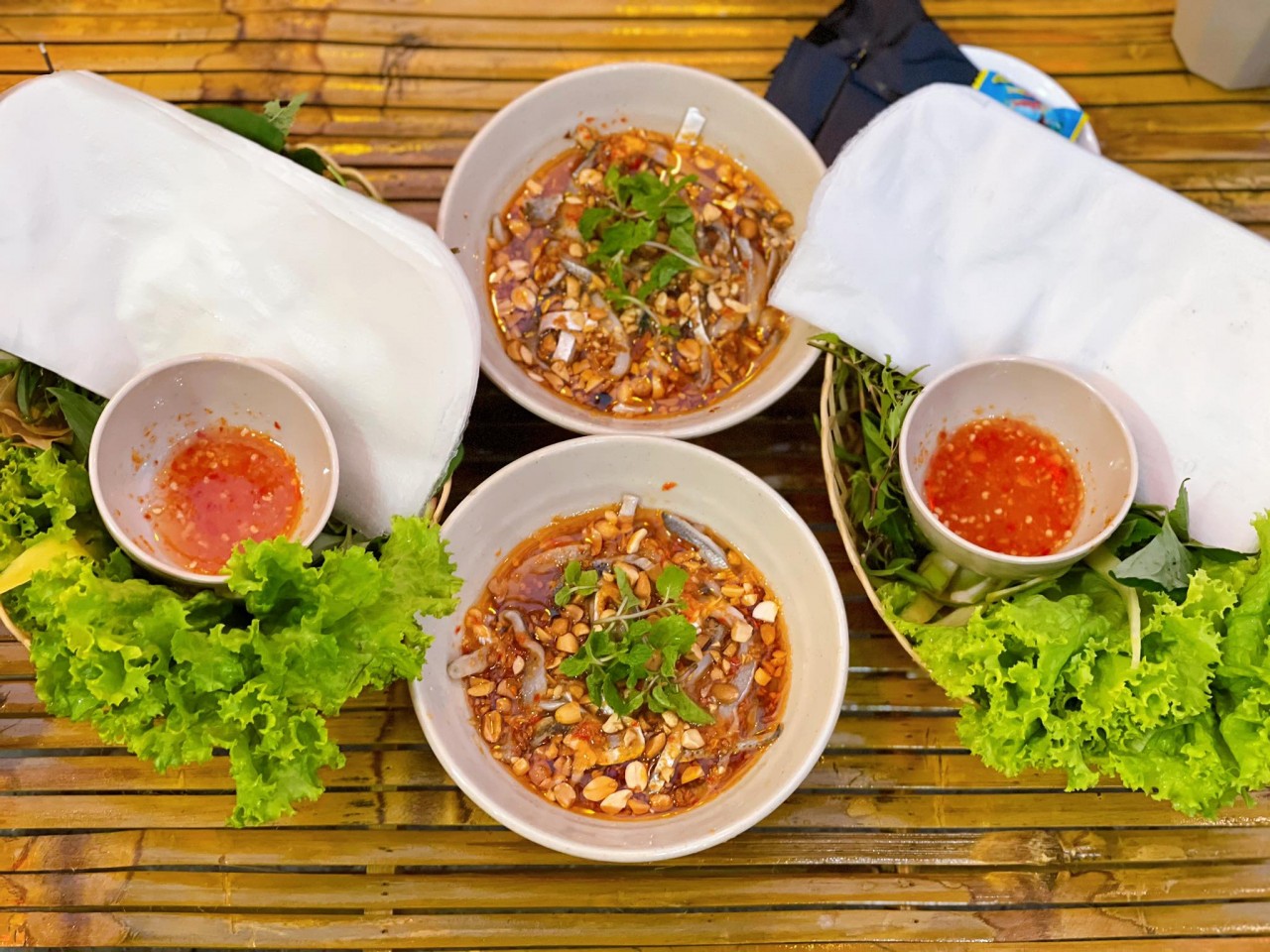 |
| Photo: Baodanang |
Other classic Da Nang dishes
1. Mi Quang (Vietnamese Turmeric Noodles)
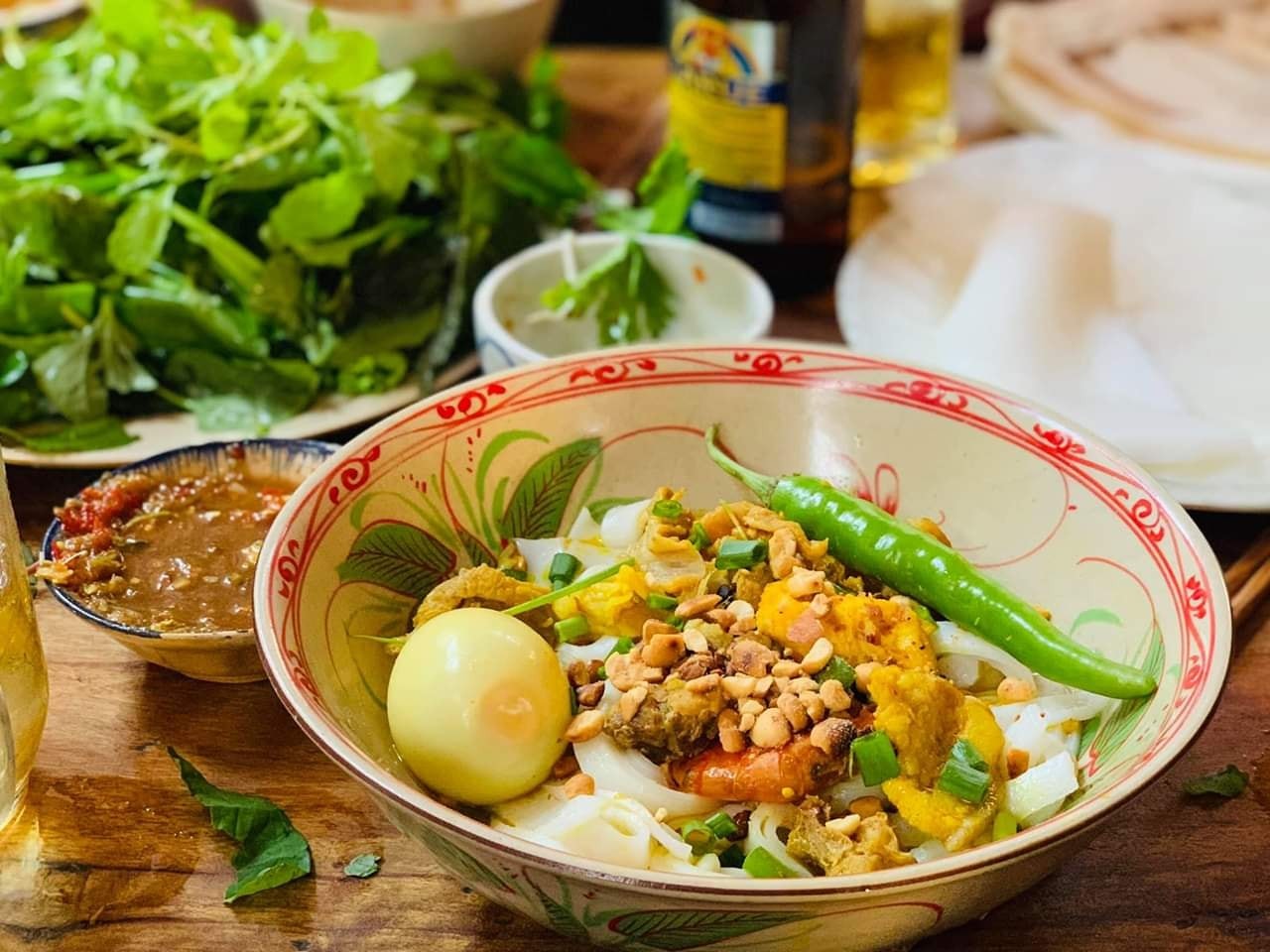 |
| Photo: Kenhhomestay |
Mi quang is Da Nang’s definitive dish, featuring rice noodles that are tinted yellow using turmeric and bone broth seasoned with fish sauce, black pepper, shallot, and garlic.
Meat toppings include river shrimp, boiled quails eggs, and roast pork, though some eateries use fish, chicken and beef slices.
Lastly, the ensemble is topped with an array of fresh herbs such as basil, peanuts, coriander, lettuce, sliced banana flowers, and sesame rice crackers.
You can also opt for chilli peppers for a spicy kick to the ensemble. Sold in any local restaurant or market in Da Nang, a bowl of mi quang costs between VND 15,000 and VND 25,000.
2. Bun Thit Nuong (Vermicelli Noodles With Grilled Pork)
Bun thit nuong comprises thin vermicelli rice noodles, freshly chopped lettuce, sliced cucumber, bean sprouts, pickled daikon, basil, chopped peanuts, and mint, topped with grilled pork shoulder.
Diners can also opt for bun thit nuong cha gio, which comes with crunchy slices of cha gio (deep-fried eggrolls). As with most Vietnamese dishes, you also get a side of nuoc cham sauce to mix into the bun thit nuong for a flavourful ensemble.
3. Bun Cha Ca (Fishcake Noodles Soup)
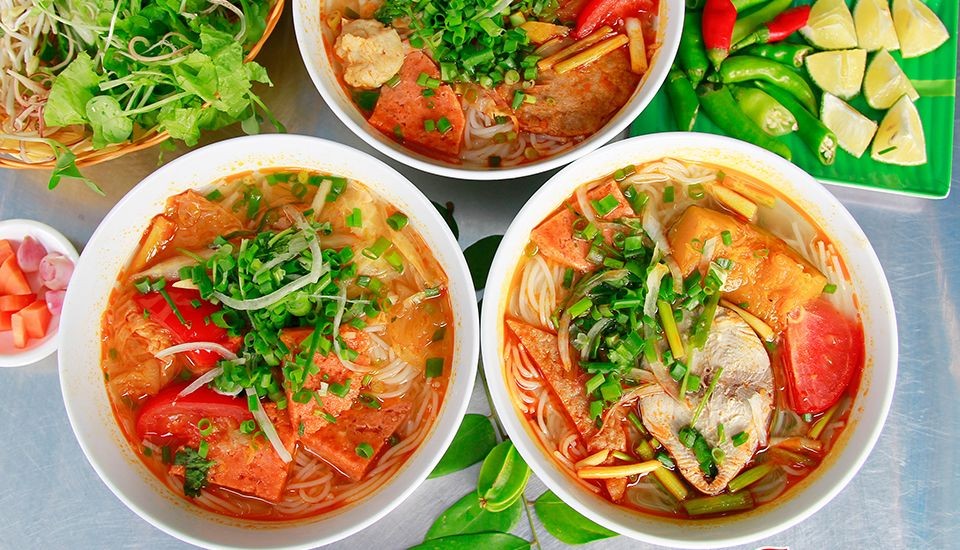 |
| Photo: Kenhhomstay |
Bun cha ca (fishcake noodle soup) is popular amongst seafood lovers due to its generous chunks of grilled fishcake, green onions, beansprouts, mint leaves, and fine rice vermicelli noodles.
Using a choice of mackerel, barracuda or lizardfish, the meat is marinated with garlic, pepper, salt, and chili before it’s kneaded into small pieces and grilled until fully cooked.
Meanwhile, the broth is prepared by simmering a mix of fish bones, pumpkin, cabbage, pineapple, tomato and dried bamboo shoots, resulting in a rich, hearty, and flavourful ensemble.
4. Com Tam (Broken Rice)
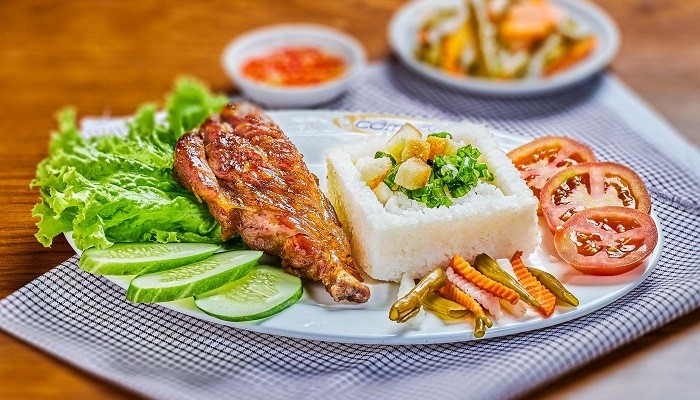 |
| Photo: Pinterest |
Com tam is Vietnamese for ‘broken rice’, a local dish that’s accompanied with fried egg, diced green onions, and a variety of meats such as suon nuong (barbecued pork chop), bi (shredded pork skin), and cha trung (steamed pork and egg patty).
Diners can also enjoy this dish with a side of pickled vegetables, cucumber slices, and nuoc cham Vietnamese dipping sauce.
With street markets and roadside food stalls selling for about VND 20,000 per bowl; com tam is very popular amongst budget-conscious travellers.
5. Com Chien (Vietnamese Fried Rice)
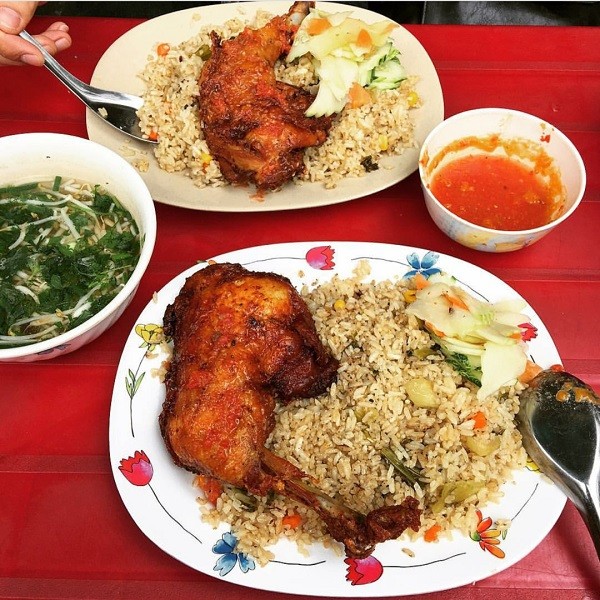 |
| Photo: top10monanngon |
Com chien is a simple dish of steamed rice and various ingredients that are stir-fried in a sizzling work. Vietnamese fried rice can be enjoyed at any time of the day, making it a good option for those looking to enjoy a simple, quick, filling, and inexpensive dish.
Priced at VND 20,000 onwards, com chien utilises leftover steamed rice, garlic-infused oil, and an array of meat, seafood, and fresh vegetables.
The dish is then garnished with fried shallots, parsley, and coriander leaves before served with a side of nuoc cham dipping sauce.
Rice paddy crab hotpot
Vietnamese cuisine revolves around produce found in the paddy fields. A nation with over a thousand years of wet rice culture, Vietnamese people have been using everything rice-related for centuries.



